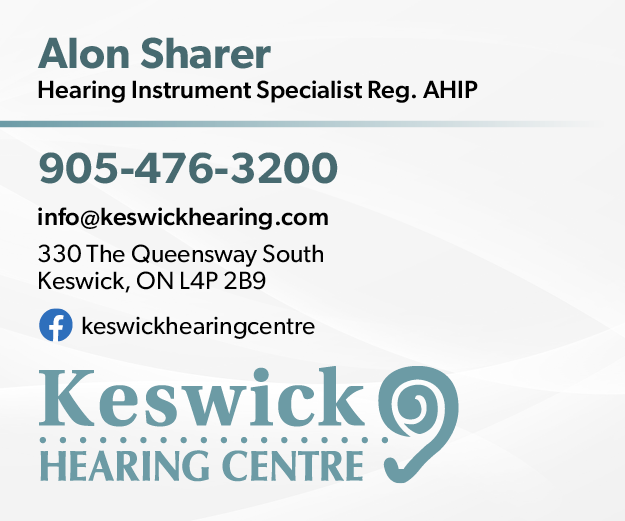By Mike Anderson
With the Aazhaawe Ferry nearing the end of its life cycle, Chief Donna Big Canoe says a Fixed Link is the best option to connect Georgina Island to the mainland.
“As Chief of the Chippewas of Georgina Island First Nation (GIFN), I am confronted daily with the health and safety challenges and barriers our community faces due to the lack of a safe, reliable, consistent transportation option. Travelling to and from the Island is difficult, time-consuming, and highly dependent on weather conditions,” she said in a statement emailed to The Post.
“A Fixed Link would provide our community with a safe, reliable, and continuous transportation option, eliminating the numerous health and safety risks and challenges associated with the current ferry system and seasonal ice roads.”
According to Chief Big Canoe, the proposed 2.4 km Fixed Link, comprised of a 1.2 km elevated bridge – 10 to 20 metres high – between two sections of causeway, totalling 1.2 km, would eliminate the ongoing expense of maintaining and operating a ferry over 75 years.
It would also make off-reserve education, training, employment, and, most importantly, healthcare, more accessible.
“A Fixed Link would be transformative for our community, improving access to emergency services, healthcare, education, employment, and community cohesion,” she said.
However, some shoreline property owners, including Lake Simcoe South Shore Residents Association (LSSRA) members, are concerned about the impact a Fixed Link would have on Lake Simcoe and its shoreline.
They also question the cost of the project and the expedited approval process, which they say doesn’t provide enough time for an adequate environmental review.
These concerns boiled over during an information session held on June 23 at the Sutton Public Library, where Mike Jacobs, the Fixed Link Project Manager, was peppered with questions from nearly 30 residents.
The session was held to notify residents that the project was resuming after being paused by GIFN on June 29, 2022, and to provide a revised project timeline.
According to Jacobs, GIFN wants to complete the project’s Impact Assessment by 2024 and have the Fixed Link operational by 2026.
Jacob also used the session to announce a change in the Fixed Link route.
The site on the mainland has moved to the Chapman property, acquired by GIFN in 2019, at 7522 Black River Rd, west of the Virginia Beach Marina. The route will bypass the Sand Islands and link to the ferry dock on the Island.
While Jacobs acknowledges the project will impact neighbouring shorelines, the extent of that impact is not yet known.
However, Jacobs said the Impact Assessment Agency of Canada (IAAC) process, chosen by GIFN over the First Nations Land Management Act, would allow more community input and utilize numerous studies and reports, which would be made public, to assess the impact of the Fixed Link on Lake Simcoe.
Jacobs said GIFN is confident that through careful planning, mitigation measures and adherence to environmental regulations, the benefits of a Fixed Link would far outweigh any negative impacts.
However, some residents were skeptical and wondered why a full Federal Impact Assessment was not requested.
Jacobs responded that it would take too much time, as the ferry may need to be replaced in three years – a full Federal Impact Assessment would take up to two years, leaving little time for construction.
Still, he pointed out that IAAC would still have the option of ordering a full Impact Assessment if it’s concerned about GIFN’s final submission.
There were also questions about the cost of the Fixed Link, estimated to be $400 million, which benefits 200 band members on the Island and an additional 200 seasonal cottagers. Residents wanted to know if GIFN had considered cheaper options, including an icebreaker ferry.
Jacobs said that an icebreaker ferry had been considered. But it was rejected for various reasons, including the long-term replacement costs – three ferries over 75 years – and operational costs, estimated to be $2 million annually.
According to Chief Big Canoe, a new ferry is definitely off the table.
She says the community needs greater ferry capacity, but a larger ferry cannot navigate through the narrow Trent Seven Waterway to reach Lake Simcoe.
She also notes that a larger ferry would have trouble navigating the shallow depths between the Island and the mainland.
“Preliminary research on an icebreaker ferry option has revealed that it’s not feasible due to the limited 10-foot water depth in the area. Reinforcing the hull for icebreaking adds weight to the boat, and achieving the necessary draft would necessitate dredging a path in the lakebed from the Island to the mainland,” she said.
Residents also wondered why a longer bridge was not considered, as it would have a lesser environmental impact than a causeway/bridge combination.
However, Chief Big Canoe says that a 2.4 km bridge is too expensive.
“A Fixed Link is our community’s best and most cost-effective solution. While a bridge may be the ideal solution, it is beyond our community’s ability to pay,” she said.
At least one resident at the meeting accused GIFN of pushing the Fixed Link solution as part of a plan to build a casino or resort on the Island.
Jacobs denied this was the case, as the current proposal for a two-lane Fixed Link would not be able to handle the traffic that a casino or resort would generate.
Chief Big Canoe is also adamant that GIFN has no plans to build a casino or resort.
“Let us be clear: our focus is on protecting our community, not attracting unknown visitors. We have no plans to build any large complexes on the Island. We remain unwavering in our commitment to the welfare and security of our community members,” she said.
“We firmly and emphatically reject the spread of baseless rumours that perpetuate harmful stereotypes and misrepresentations and negatively impact our First Nations community.”
While the Federal government will absorb the lion’s share of Fixed Link costs, GIFN will also make a sizeable contribution, which includes $1.6 million for more than 30 preliminary studies and reports.
“Funding for the project would come from various sources, including GIFN itself,” said Chief Big Canoe.
“The funding strategy encompasses a mix of repayable contributions, such as those available through the Canada Infrastructure Bank (CIB), which has approximately $1 billion designated for Indigenous infrastructure projects.”
While more than 30 studies, including the Fixed Link’s impact on plants and wildlife, air quality, and water and sediment transfer, remain outstanding; Jacobs said he expects them to be completed by October.
GIFN will then be able to file a Detailed Project Description (DPD), which gives the public only 30 days to comment before IAAC decides whether or not to “green light” the project.
Still, GIFN has promised to host another information session before its DPD submission.
More info is available on the project website, www.gifixedlink.com, where you can register for updates.
- New Sutton Cenotaph unveiled before Remembrance Day - November 7, 2025
- Municipal speed cameras will issue fines until November 14 - November 7, 2025
- Trinity’s Pizza serves up hot slices with a smile - November 4, 2025










































